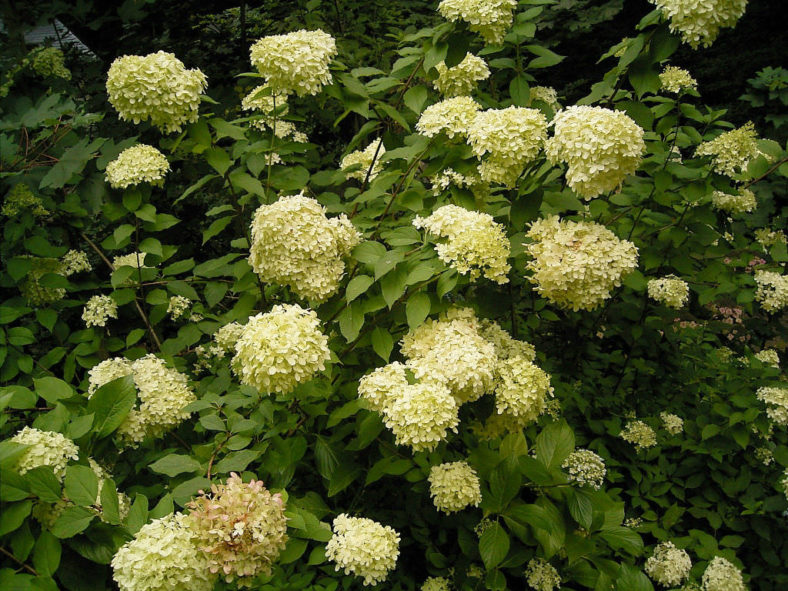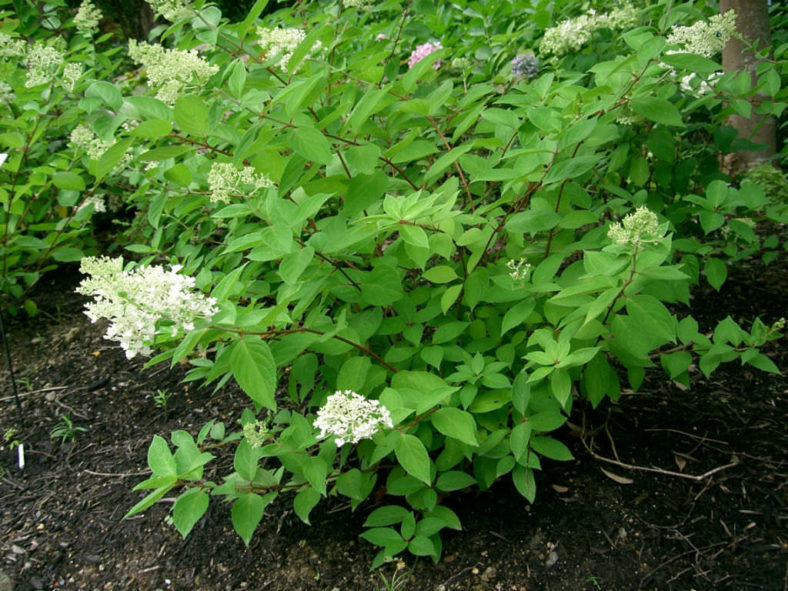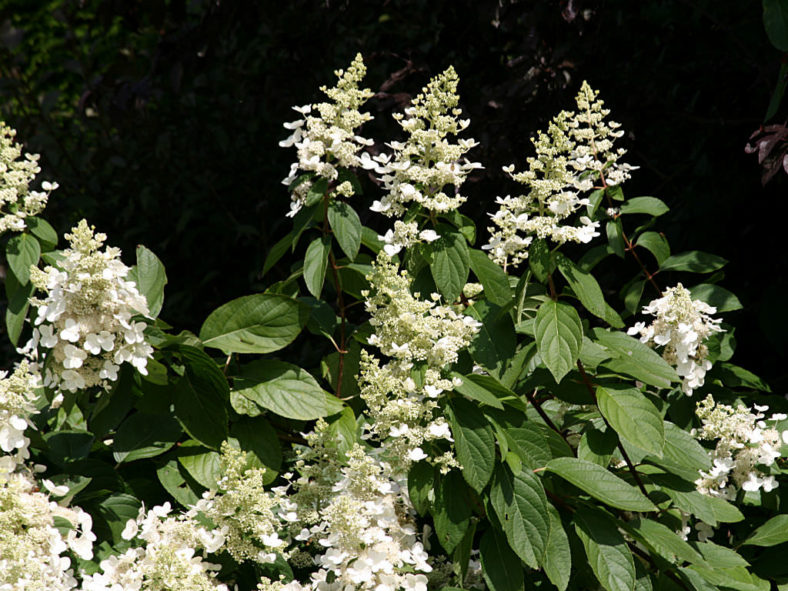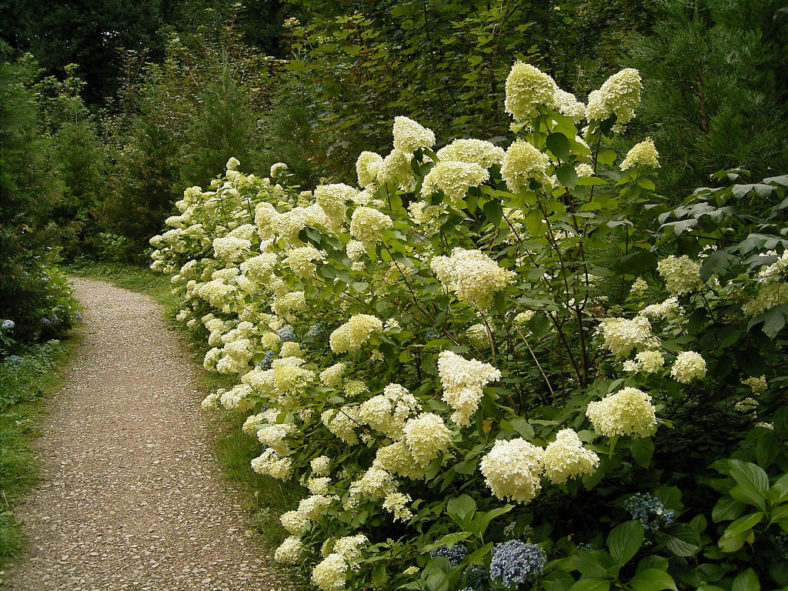Scientific Name
Hydrangea paniculata Siebold
Common Name(s)
Panicled Hydrangea
Synonym(s)
Hydrangea kamienskii, Hydrangea sachalinensis, Hydrangea schindleri, Hydrangea verticillata
Scientific Classification
Family: Hydrangeaceae
Genus: Hydrangea
Flower
Color: White
Bloom Time: Late summer
Description
Hydrangea paniculata is a deciduous shrub or small tree that grows up to 16.4 feet (5 m) tall and up to 8 feet (2.4 m) wide. Leaves are broadly oval, toothed, and up to 6 inches (15 cm) long.
The plant bears large conical panicles of creamy white fertile flowers in late summer together with pinkish-white sterile florets.

Hardiness
USDA hardiness zone 3a to 9b: from −40 °F (−40 °C) to 30 °F (−1.1 °C).
How to Grow and Care
Hydrangeas prefer a sunny or semi-shaded position in a cool garden area with shelter from cold, drying winds. Thus, they are especially useful for brightening up shaded borders and making an attractive feature in the dappled shade of woodland gardens. Try to avoid hot, sunny areas and east-facing spots where colds winds can damage the spring growth.
Grow Hydrangea plants in any rich fertile, moist soil. It's a good idea to work in some well-rotted manure or compost before planting Hydrangeas, and they will always appreciate a mulch of organic matter in spring to help conserve moisture at their roots and feed them up for them for the coming growing season. On light soils, it is a good idea to feed Hydrangeas with an ericaceous fertilizer.
See more at How to Grow and Care for Hydrangeas.
Origin
This species is native to southern and eastern China, Korea, Japan, and Russia (Sakhalin).
Links
- Back to genus Hydrangea
- Plantpedia: Browse flowering plants by Scientific Name, Common Name, Genus, Family, USDA Hardiness Zone, or Origin
Photo Gallery
Click on a photo to see a larger version.




